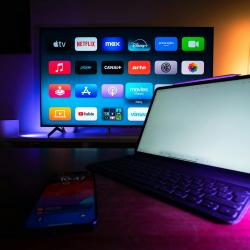What to Do When Your Laptop Won’t Turn On
Finding your laptop unresponsive and refusing to power on can send a wave of panic through even the most tech-savvy among us. Whether you're dealing with important work files or just want to stream a favorite show, a malfunctioning laptop can feel like a significant setback. However, before you consider replacing it or taking it in for repairs, there are several troubleshooting steps you can try at home.
1. Perform a Preliminary Check
a. Inspect the Power Supply and Battery
One of the most common reasons a laptop won't turn on is a problem with the power supply. First, confirm that your power cord is plugged into both the laptop and the electrical outlet. It's surprisingly easy to overlook a loose connection, especially in a cluttered workspace.
If the laptop is plugged in and still not responding, check the outlet by plugging in another device. If that doesn't work, try a different electrical outlet or test the power cable with another compatible laptop, if possible.
For laptops with removable batteries, try taking the battery out, pressing and holding the power button for about 15-20 seconds to drain any residual power, then reinsert the battery and try to turn it on again. For non-removable batteries, ensure the laptop is receiving power via the charging cable.
b. Examine for Physical Damage
Inspect your laptop for any visible signs of damage, such as cracks or loose components. Dropping your laptop or spilling liquid on it can cause serious issues that may prevent it from powering on.
2. Conduct a Power Reset
Even without a removable battery, laptops can sometimes benefit from a power cycle. Remove all peripheral devices (USB drives, external hard drives, etc.), disconnect from the charger, and hold the power button for approximately 30 seconds. Reconnect the charger, but leave peripherals disconnected, and try to start the laptop again.
3. Check for Indicator Lights and Sounds
a. Indicator Lights
Pay attention to any indicator lights or sounds when you press the power button. A blinking power light or battery indicator may signal a hardware issue or a low battery.
b. Listen for Sounds
Listen closely for any sounds, such as the whirring of fans or the hard drive, as these can indicate that the device is booting up but perhaps not displaying anything on the screen. If you hear repeated beeping, consult your laptop manual or the manufacturer's website; these sounds often indicate a specific hardware error that the manufacturer can help you decipher.
4. Connect to an External Monitor
If you’re confident the laptop is turning on but aren’t seeing anything on the display, try connecting it to an external monitor. This can determine if the issue lies with the display rather than the laptop itself. Use an HDMI or VGA cable for this test.
If the external monitor displays your desktop, your laptop screen may be malfunctioning, and professional repair might be necessary.
5. Use a Bootable USB Drive
If you suspect a software issue (such as a corrupted operating system), you could try booting from a USB drive with a fresh copy of your operating system. Make sure that your laptop's BIOS is set to boot from a USB drive, and follow the installation instructions to troubleshoot any software-related problems.
6. Seek Professional Help
If all else fails, it may be time to consult a professional technician. Frequent crashes, noises from within the laptop, or other unusual behaviors often require professional repairs, particularly if components like the motherboard or hard drive are at fault.
Prevention Tips
To minimize the risk of future issues, practice regular maintenance:
- Clean your laptop: Dust and debris can accumulate, affecting performance and causing overheating.
- Keep software updated: Regular updates can fix bugs and prevent system vulnerabilities.
- Use surge protectors: These can protect your laptop from electricity spikes that could damage internal components.
- Backup data regularly: Ensuring that your important files are backed up can prevent data loss in the event of complete hardware failure.
A non-responsive laptop can be frustrating, but taking logical, systematic steps to troubleshoot the issue can often bring your device back to life. Remember to stay patient and consider professional help if needed to avoid exacerbating the problem.






















